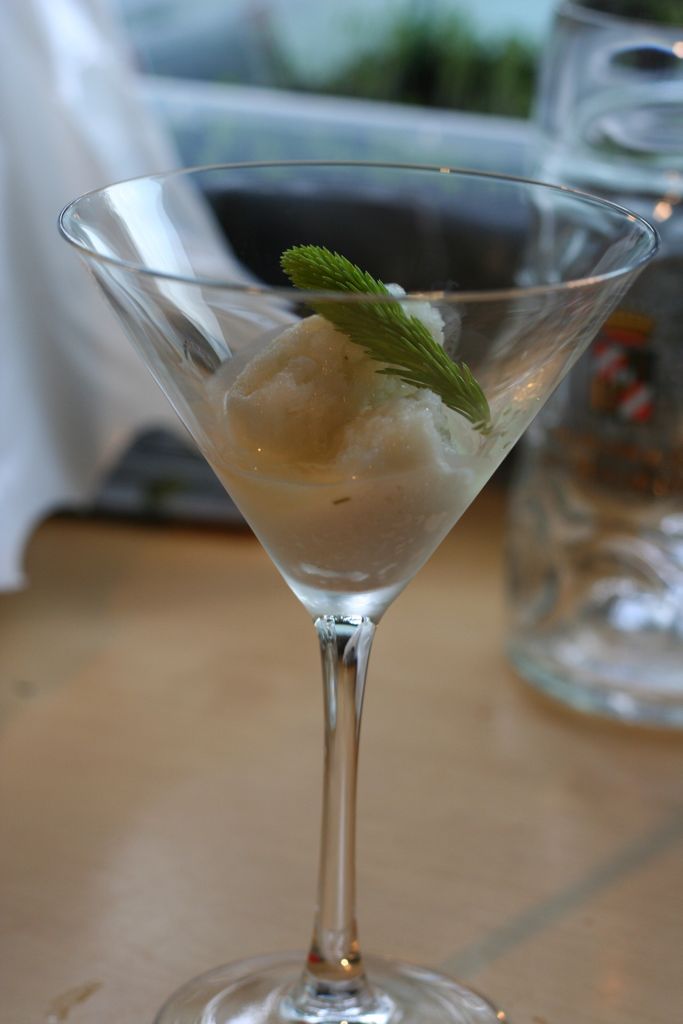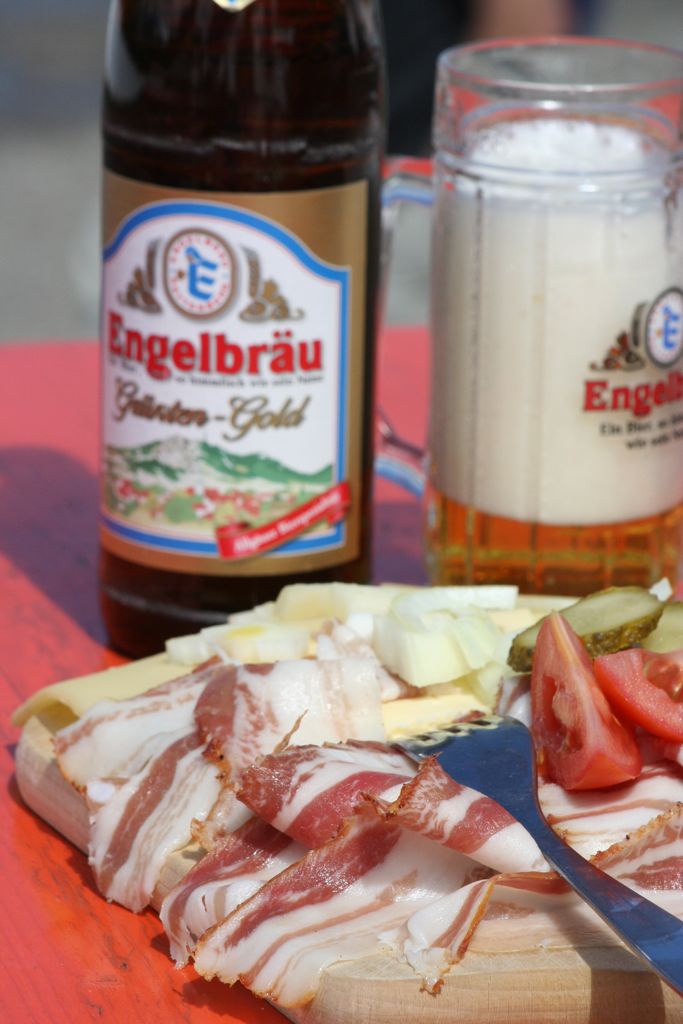
Since moving to Munich, Sunday mornings have mostly consisted of both of us waking up in good spirits (or after, for that matter), soon to realise that it is Sunday and all the supermarkets are closed, putting a damper on our good mood. You would think we would have learnt this after eight (for him) and four (for me) months here, but no. Since we go to the grocery store once a day, we never shop for days to come. This usually works pretty well, except on Saturdays.
We are slowly coming to terms with the outrage that is Germany's love for ridiculous laws, and last weekend we actually started the Sunday breakfast the night before. For almost a whole week, I had been craving English Muffins with lemon curd, but since they are something I associate with weekends only, I had to wait. Luckily for me, Daniel suggested we make some for Sunday breakfast.
We had some rhubarb compote and crumbles (which i toasted in the frying pan) left over from the rhubarb crumble pie we made the day before, and combined with honey and orange flavoured yoghurt it was really lovely, and together with the English Muffins it made a perfect Sunday breakfast. If you don't have rhubarb compote or left over crumbles, use whatever fruit/berries you like, and toast some almonds or hazelnuts instead.
English Muffins, swiped from Winos and Foodies

Ingredients
2 teaspoons dried yeast granules (I used half a cube of fresh yeast, 20 - 25 grams)
1/2 teaspoon sugar
250ml warm water
125ml warm milk
350g high grade flour
100g standard flour
1 teaspoon salt
rice flour or fine cornmeal
Instructions
Put the yeast and sugar in a small bowl with half the warm water. (Note: If using fresh yeast, break it into small pieces and use lukewarm (37 °C) water instead.) Stir and set aside for a few minutes (Note: no waiting involved with the fresh yeast), then add the remaining water and the milk.
Put the flour and salt in a large bowl and use your hand to mix in the yeast, water and milk mixture. Knead the mixture which will be sticky, thoroughly in the bowl (or use the dough hook of an electric mixer).
Cover the bowl with a damp tea towel and set aside to rise until more than doubled in bulk. Although this may take only a couple of hours, the dough can be allowed to rise overnight. Deflate the dough by pulling it away from the sides of the bowl. Lift it out of the bowl and divide into 8 pieces.
Drop each piece on to a tray liberally dusted with rice flour or fine cornmeal and roll them over until well coated.
Form each piece into a thick disc.
Place the disks on a baking tray and place another tray on top.
Leave to rest and rise 20 minutes, then remove top tray.
Place a cast iron griddle or large frying pan over low heat.
When only moderately hot place four of the muffins on it and cook for about ten minutes until light beige on the bottom.
Turn the muffins over and cook the second side for a similar length of time.
Wrap the cooked muffins in a dry tea towel while you cook the remaining four.
Pull apart and eat while still warm.
For toasting pull the muffins apart and toast on both sides.
---
Lemon Curd, swiped from Tartelette
Grated zest of 1 lemon
1 cup strained lemon juice
1/2 cup sugar
2 eggs
Combine the zest, sugar, juice in a saucepan, and bring to a simmer.
In a small bowl, beat the eggs until light.
Beat some of the lemon mixture into the eggs to temper. Scrape the mixture back into the saucepan and cook stirring constantly until it thickens up, about 5 minutes.
Strain and refrigerate, covered with plastic wrap until ready to use.







